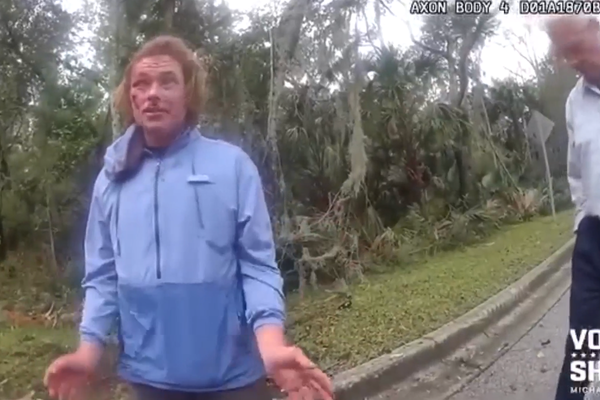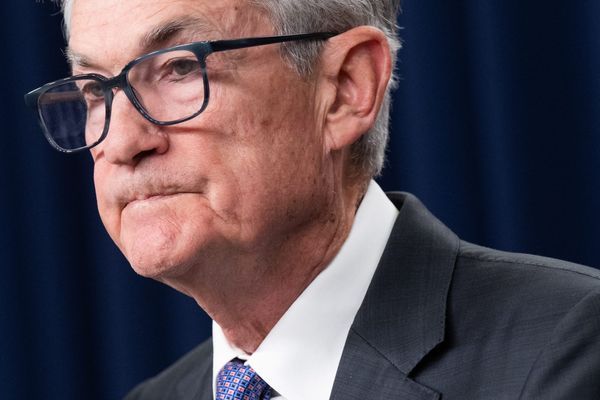The claim
As Victoria's first election since the pandemic rapidly approaches, state Opposition Leader Matthew Guy has for months fought to keep the 262 days Melbourne spent under strict stay-at-home orders fresh in voters' minds.
On March 14, he issued a media release that argued small business owners had been "smashed with [Premier Daniel Andrews's] world record 262 days of lockdown".
In an October 30 media statement and November 5 Facebook post, he similarly claimed that Victorian kids had been through "the world's longest lockdown".
The Liberal Party launched a campaign imploring voters not to let Mr Andrews "get away with it", making several bold claims on its putlaborlast.com website.
"While the whole of Victoria suffered, Melbourne had the dubious distinction of becoming the most locked-down city in the world," it said.
So, was Melbourne really the world's most locked-down city?
RMIT ABC Fact Check investigates.
The verdict
Mr Guy's claim is not clear cut.
Notwithstanding the difficulty in comparing lockdowns in different metropolitan areas around the world, Melbourne does not hold the record for the most days spent under strict stay-at-home pandemic restrictions.
Iquique, in Chile, spent more days locked down in aggregate, suffering through 287 days of restrictions compared with Melbourne's 262.
Looking at the longest continuous efforts, Buenos Aires spent 234 consecutive days locked down compared to Melbourne's stretches of 111 and 77 days.
At various times, Mr Guy singled out the plight of Victoria's school students.
However, millions of children in Manila, in the Philippines, spent more than 450 days under stay-at-home restrictions during 2020 and 2021. Other groups were similarly locked down, including over-65s and anyone who lived with them.
Meanwhile, many of the nation's schools suspended in-person classes for more than two years.
Importantly, a lack of internationally comparable data at the city level or lower makes it impossible to say definitively which city or population weathered the strictest conditions for the most time.
A numbers problem?
While Mr Guy claimed that Melbourne had been through the world's longest lockdown, such comparisons are far from straightforward.
For one thing, there is no universal definition of what constitutes a "lockdown".
So-called "stay-at-home orders" can offer a useful proxy, though rules vary between countries and are just one element of pandemic restrictions.
Countries also adopt very different strategies for targeting their lockdowns.
Some may impose them on small (including densely populated) parts of a city, for example, while others may apply different rules to different populations within the community.
There are also subjective questions to consider, such as whether (and to what extent) the duration of restrictions matters more than their severity, or whether consecutive stretches matter more than cumulative days.
And then there are the data limitations.
The executive director of Oxford University's COVID-19 Government Response Tracker, Toby Philips, previously told Fact Check that his team maintained "the most comprehensive data source in the world on COVID-19 pandemic policy".
But he said it was "literally impossible" to prove from this which city had been through the world's longest lockdown, in part due to the tracker's focus on national rather than local restrictions.
What about China?
China provides a useful case study for illustrating these complexities.
It has imposed numerous whole-city lockdowns — most notably in Wuhan and, more recently, Shanghai — while also adopting a more localised approach of "closed management" for neighbourhoods and apartment buildings.
As academics writing for The Conversation explained in 2020, there were two types of closed management: a strict form that prevented residents from leaving home, and a looser version that allowed movement but with 24/7 entry checkpoints on buildings.
More recently, BBC reporters have noted the difficulty in tracking China's localised restrictions over time, in part due to evolving official terminology.
They said the current phase in 2022, known as "scientific and precise dynamic zero", is about avoiding city-wide lockdowns and instead "responding more dynamically depending on what the situation requires".
"But on the ground, it just looks and feels like a series of endless lockdowns."
The article adds: "Several lockdowns announced by local officials were, in fact, missing from Beijing's daily announcements in March and April [2022] — including one in Shenzhen which confined 17 million to their homes for a week."
According to a separate BBC report, residents in the city of Chongqing were told to stay home despite there being no official announcement.
How long was Melbourne 'locked down'?
Fact Check last broached this topic in October 2021, finding that Melbourne had spent a total of 262 days under strict stay-at-home restrictions.
This tally covers six separate stretches between March 31, 2020, and October 21, 2021, and excludes 19 days of "soft" lockdown, when the rules allowed groups of five people to "visit friends, family and loved ones" in their homes.
Victoria as a whole was also locked down at various times, though to a lesser extent than the capital.
Since restrictions in Melbourne were eased on October 21, 2021, they have not returned.
Was it really the world record?
When it came to consecutive days under strict stay-at-home rules, Fact Check found that Melbourne was outdone by the Argentinian capital, Buenos Aires.
Melbourne's longest single lockdown lasted 111 days. Ten months after it ended, in October 2020, it suffered through another 77 days.
In Buenos Aires, however, residents were forced to spend 234 consecutive days at home between March and November 2020 (and 245 days in total).
That included periods during which outdoor exercise was banned entirely and children were not allowed outside for several weeks.
Nor did Melbourne clinch the record for cumulative days, with the Chilean city of Iquique clocking up more time under stay-at-home orders.
Compared to Melbourne's 262 days, Iquique's residents endured 287 days of lockdown, comprising 241 days of "quarantine" and 46 days of "transition".
Quarantine meant only leaving home for essential reasons, with shopping trips limited to twice per week and permits required for dog walks. Transition kept the same rules in place, but only on weekends.
It's worth noting that the Chilean government introduced a "mobility pass" from May 23, 2021, which granted more freedoms to fully vaccinated residents.
This would have affected some residents of Iquique during the final 12 days of the city's lockdowns, but it does not change the outcome relative to Melbourne.
Data from Oxford University's tracker indicates that, like Australia, Chile and Argentina have since left lockdowns behind as a way to tackle the pandemic.
How much do cities matter?
As Fact Check has also previously highlighted, in some places certain populations were locked down for longer than cities as a whole.
In the Philippines, many adults aged over 65 years, children under 15 and people with "health risks" — plus anyone who lived with them — were under stay-at-home orders for more than 450 days during 2020 and 2021.
This applied to residents of Manila. According to the 2020 national census, the national capital region was home to 4.3 million children and seniors.
Notably, Mr Guy singled out the hardship faced by Victorian students, who he said experienced "up to 171 days of lost learning during Daniel Andrews' record breaking lockdowns".
Putting aside the fact that Melbourne's schools continued to offer remote learning during lockdowns, that figure would represent roughly 34 weeks of class learning out of a typical 40-week school year.
By contrast, schools across the Philippines were closed for more than two years.
Schools shut their doors in March 2020 and, according to the World Bank's director of Education Global Practice, just one per cent of them had reopened by November 2021.
Physical classes did not resume for most schools until August 2022, and even then roughly half were still conducting a mix of in-person and online learning.
Principal researcher: David Campbell
Sources
- Liberal Party, Putlaborlast.com, accessed November 11, 2022
- Matthew Guy, Media release, March 14, 2022
- Matthew Guy, Media release, October 30, 2022
- Matthew Guy, Facebook post, November 5, 2022
- Fact Check: Josh Frydenberg says Melbourne is the world's most locked down city. Is that correct?, October 25, 2021
- Fact Check: Gladys Berejiklian says Sydney's lockdown conditions are harsher than any of those previously imposed in other states. Is she correct?, August 25, 2021
- Fact Check: Tony Abbott says Victoria's coronavirus lockdown is the most severe tried in the world outside Wuhan. Is he correct?, October 1, 2020
- Oxford University, COVID-19 Government Response Tracker, accessed November 11, 2022
- Reuters, Chile to loosen restrictions for those vaccinated against COVID-19, May 25, 2021
- Philippines Statistics Agency, Age and Sex Distribution in the Philippine Population (2020 Census of Population and Housing), August 12, 2022
- Jaime Saavedra, Schools — the great equaliser that vanished, February 1, 2022
- Al Jazeera, Philippine schools reopen after one of world's longest shutdowns, August 22, 2022
- The Conversation, Coronavirus: Beijing outbreak shows China's plan for preventing a second wave, June 25, 2020
- BBC, China Covid: The politics driving the hellish lockdowns, October 21, 2022
- BBC, China zero Covid: Violent protests in Guangzhou put curbs under strain, November 16, 2022







